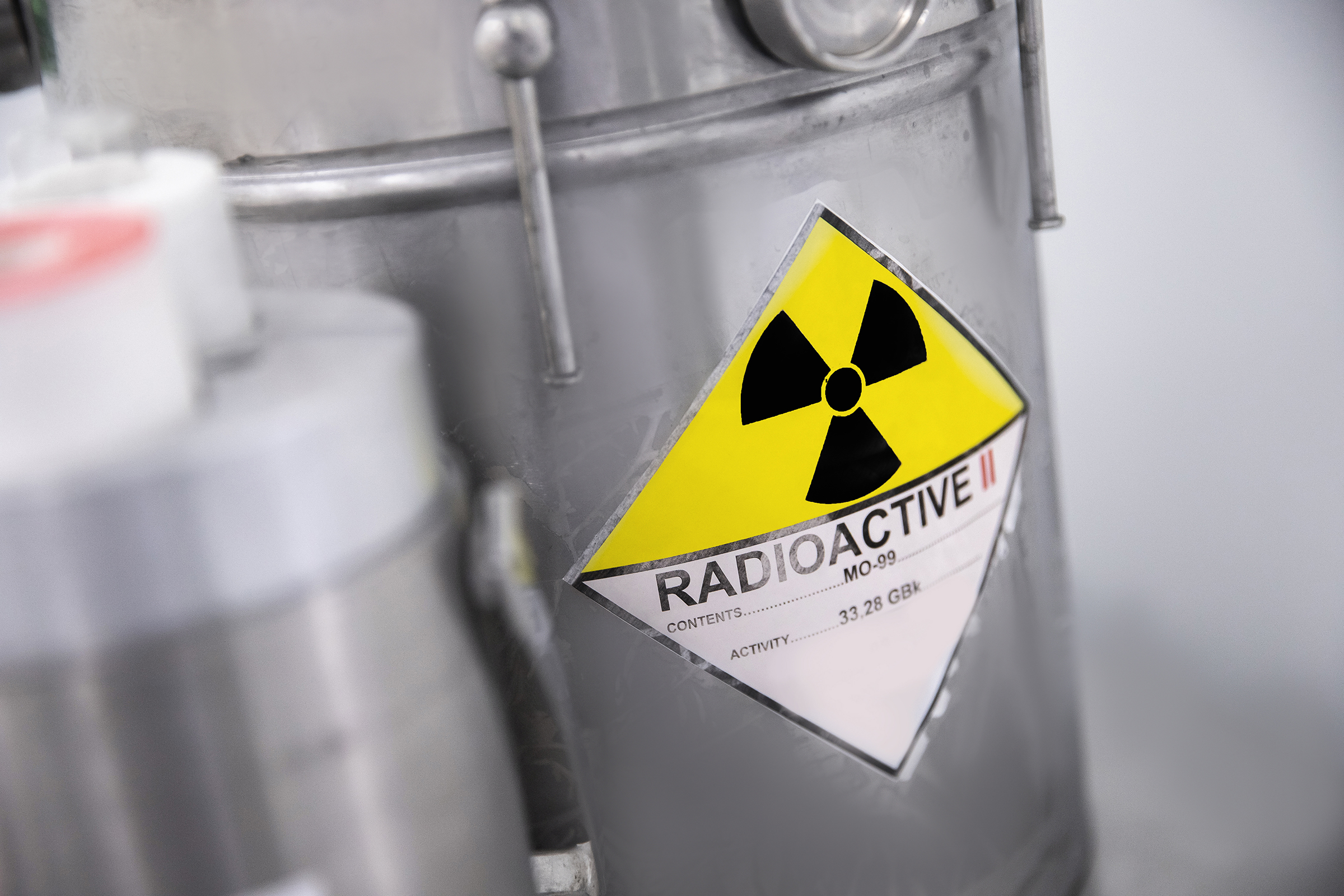Training for Ancillary Staff
Ancillalry staff (housekeeping, maintenance, security, environmental services, facilities management, and emergency response personnel) should receive instruction before working in or visiting an area where entry is controlled because of the presence of radiation, such as research laboratories and patient care areas. Regulations require the extent of instruction be appropriate for the potential radiation safety issues in the area. Departments may request training on an "as needed" basis from Radiation Safety.
Radioactive Material Use Area Entry
All areas that are approved to contain Radioactive Material (RAM) are clearly marked with a radiation warning sign that contains the standard international, three-bladed magenta (purple or black) symbol on a yellow background. Look for radiation warning signs before and after entering a room, especially laboratories. Also look for radiation symbols while inside the posted room. If a radiation warning sign is posted, do not enter the room unless entry is necessary to perform your job duties and you have been briefed by your supervisor and/or a worker in the room regarding the location of radiation hazards. Never move, pick up, or touch an object or container that is marked with a radiation symbol. Never cross or reach over an area marked with boundary tape containing the radiation symbol, because the tape indicates the area is used for RAM. For radiation emergencies, please call 614-561-7969.
Maintenance and Construction
Before any major maintenance or construction is performed in a room posted with a radiation warning sign, Radiation Safety staff should perform a maintenance survey of the area to identify any possible radiation hazards and ensure worker safety. Radiation Safety will forward the results of the maintenance survey to supervisory personnel and/or to the requestor. Note that major maintenance is defined as work that would require breaching a boundary, i.e., cutting into pipes or walls. It does not include simple operations, such as changing a light bulb or operating a valve or circuit breaker. A maintenance survey may be requested by contacting Radiation Safety or the inspector for that building.
Dosimeters
Ancillary staff exposure to radiation is not expected to be significantly different than that from natural background radiation, so ancillary staff are not required to wear dosimeters that monitor their exposure to radiation in the workplace.
Natural Background and Sources of Natural Background Radiation
For most individuals, the dose from manmade radiation sources is relatively small, compared to naturally occurring background sources of radiation. Natural background radiation is constantly present and emitted from the environment and our bodies. Sources of natural background radiation include cosmic radiation, terrestrial radiation, and radionuclides within the body. Cosmic radiation comes from the sun and outer space. Cosmic radiation exposure increases at higher altitudes, so people living in Denver CO receive more cosmic radiation than people living in Columbus OH. Individuals flying in airplanes or astronauts also receive increased amounts of cosmic radiation. Terrestrial radiation is a natural source of radiation in the ground, rocks, building materials, and water supply.
Always Ask
If you are unsure of the right actions to take or you believe the situation is unsafe, ask for help. Radiation Safety is ready to answer your questions and discuss your concerns. The primary mission of Radiation Safety and The Ohio State University is to ensure that employees have a safe work environment with respect to radiation. Your questions can help.
